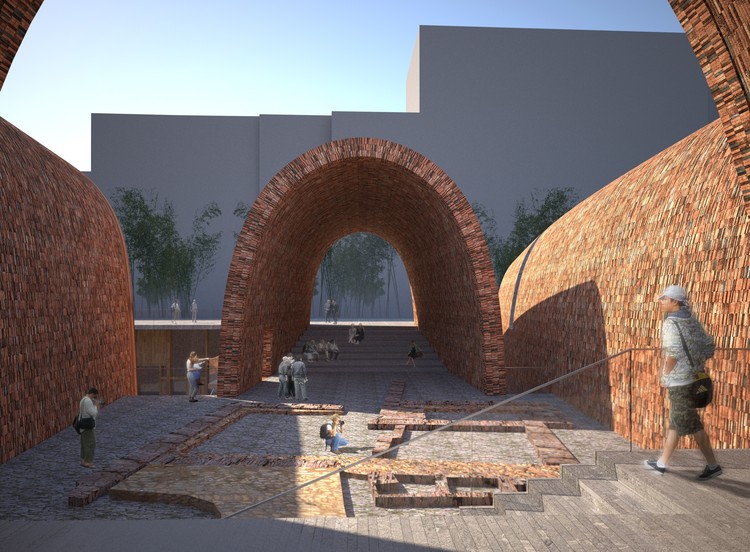
Studio Zhu-Pei has unveiled their design for the Jingdezhen Historical Museum of Imperial Kiln, a museum dedicated to the unique history of ceramics in Jingdezhen, China. Located in the heart of the historic china-making district of the city, nestled between ceramic workshops that date back to the Ming and Qing dynasties, the museum draws inspiration from the special forms of the kilns, creating gallery spaces out of a series of hand-crafted vaulted structures.

According to Studio Zhu-Pei the city of Jingdezhen was “born by a kiln” and rose to economic prosperity over thousands of years through the creation of high-quality, sleek china pieces. As symbols of this prosperity, the remaining workshops hold important cultural and historic value to the city. Studio Zhu-Pei’s museum design is therefore deferential to this context, maintaining a relatively low profile that encourages visitors to look out at the city, with direct sightlines to important monuments such as the Tang Dynasty pagoda.


Rather than attracting attention through size and scale, the museum stands out through its composition, rotation and gathering of individual volumes and vaults. The arrangement consciously breaks with the existing urban fabric to activate its surroundings and provide visitors to the exhibition spaces with an unexpected experience.



“Vaults of the museum reflect unearthed relics, while half of its volume remains underground. It creates connections, both physical and spiritual, between the aboveground and underground; present and history. The museum guides visitors into kilns, to ruins, and back to the traditions and culture of local history. The form is simple and primitive, yet full of strength. In silence and light people are encouraged, by the honesty of architecture, to feel the history and culture. We expect visitors will have a chance to rethink upon the relationship between this city and its kilns, its past and its future,” explain the architects.


Studio Zhu-Pei also hopes that the museum will serve to garner global attention to Jigndezhen, both to increase awareness of the city’s role in the history of ceramics, but also to change the city for the better.
“A single museum is capable of changing an entire city. The historical museum of china is bound for carrying on the culture of china, telling the stories of Jingdezhen's history and culture to the world, and bringing out new life and events to the city.”


Construction on the project begins this year, with an expected completion date in 2017.
Studio Zhu-Pei’s design for the Jingdezhen Historical Museum of Imperial Kiln is currently being exhibited as a part of “Towards a Critical Pragmatism: Contemporary Architecture in China,” now on display at the Harvard GSD.































